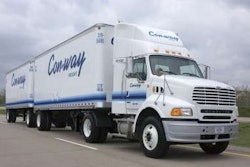Trucks with fewer options might not be so bad
I can’t stand to watch more than five minutes of professional golf on TV before I have to change the channel. But put a car auction on, and I’ll sit there all night staring at the screen.
I love all old cars, but I’m particularly fond of ’60s vintage muscle cars, which means my show of choice is “Mecum Auto Auction: Muscle Cars and More.” And what’s not to love as an endless cavalcade of Corvettes, GTOs, Chargers and Mustangs parade across the TV screen – with an occasional ’30s, ’40s or ’50s dream machine thrown in for good measure?
Most of those heavy-metal cruisers from that era ended up in scrap yards. That, of course, is what makes the survivors so desirable today. But beyond simple survival, you don’t have to watch an auction long before you learn that it’s the options on the cars that set off bidding wars that can escalate into hundreds of thousands of dollars. A ’57 Vette is nice.
But throw in Chevy’s fuel-injection option from that year, and a cool car suddenly becomes red-hot in a collector’s eyes. It’s the same thing with Plymouth’s 1970 Superbird: Take what was essentially a Dodge Charger, add a shark nose and a huge rear spoiler to meet some arcane NASCAR rules, and suddenly collectors will knife-fight each other to get their hands on it. (Never mind that Superbirds were considered ugly back in ’70 and dealers couldn’t move them. That so few were sold only adds to the feeding frenzy today.)
Today, auto manufacturers severely limit the number of options we can choose when buying a new car. As competition from Japan and Europe heated up and fuel and healthcare costs began skyrocketing, the Big Three needed to take every cost-cutting measure they could find, and options were an early casualty. By the time the ’80s rolled around, buyers had almost no say-so concerning powertrain choices. A new Chevy might have an Oldsmobile engine under the hood, and tough luck if you didn’t like it.
American truck manufacturers still offer a bewildering array of components, engines, frames, transmissions, brake systems and so on to meet virtually any customer spec imaginable. You can sit down with the books and build a truck from scratch to meet your specific duty cycle.
It’s been that way for years. Why on earth would anyone want to change that practice?
Well, to control costs. It’s no secret that new truck prices rise somewhere in the neighborhood of 2 to 4 percent every year. That’s because the truck manufacturers are shouldering huge cost outlays they have to recoup. It can cost hundreds of millions of dollars to design a new truck today. And every piece of optional equipment drafted into the design sends those costs higher.
And just like the Big Three in the ’70s, truck manufacturers have to contend with foreign competition and markets. Why spend triple the money to develop three separate trucks for Europe, North America and Asia when you can design one truck for all three and pass those savings along to your customers?
The onus will be on the truck manufacturers to answer that question in a satisfactory manner, of course. But a reduction of optional equipment won’t necessarily be a bad thing. It’ll be much easier to specify a vocational truck, or a lightweight highway hauler optimized for fuel economy and payload. You’ll lose some control over the final product, of course. But the nature of the North American truck market means a wide array of models and options still will be offered. Maintenance procedures will be simplified somewhat. And ever-escalating new truck prices will be contained a bit.
There’s no need to panic. Truck manufacturers probably aren’t planning to suddenly cut a bunch of options out of their specification manuals. More likely the shift will be slow, but steady. But rest assured – integration is coming to our shores, sooner or later.













